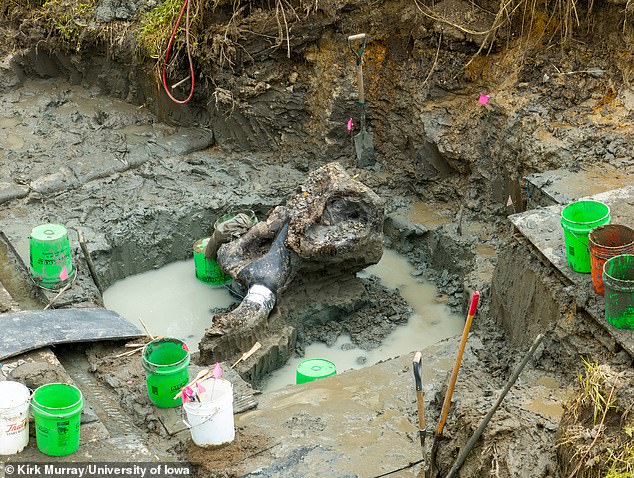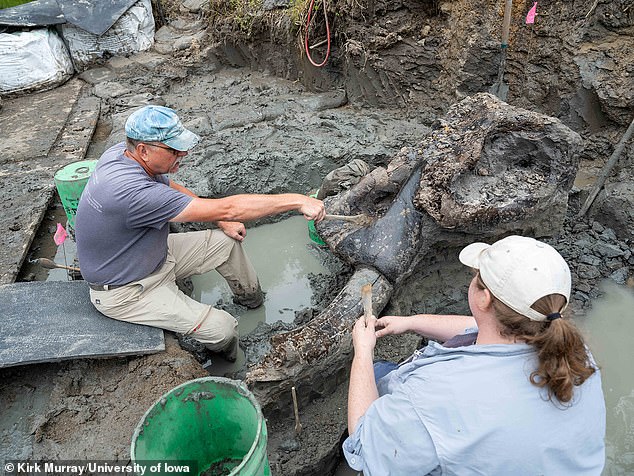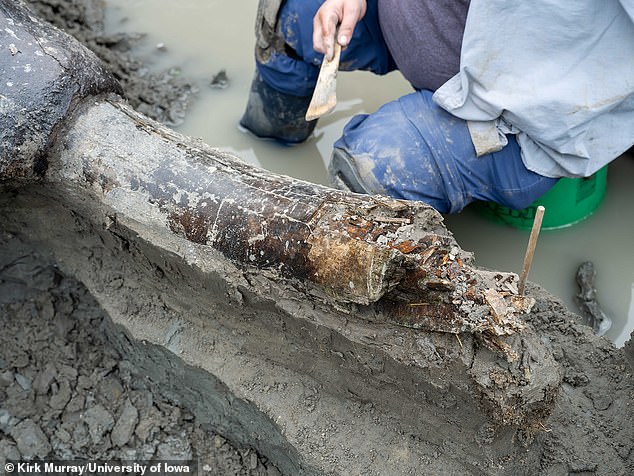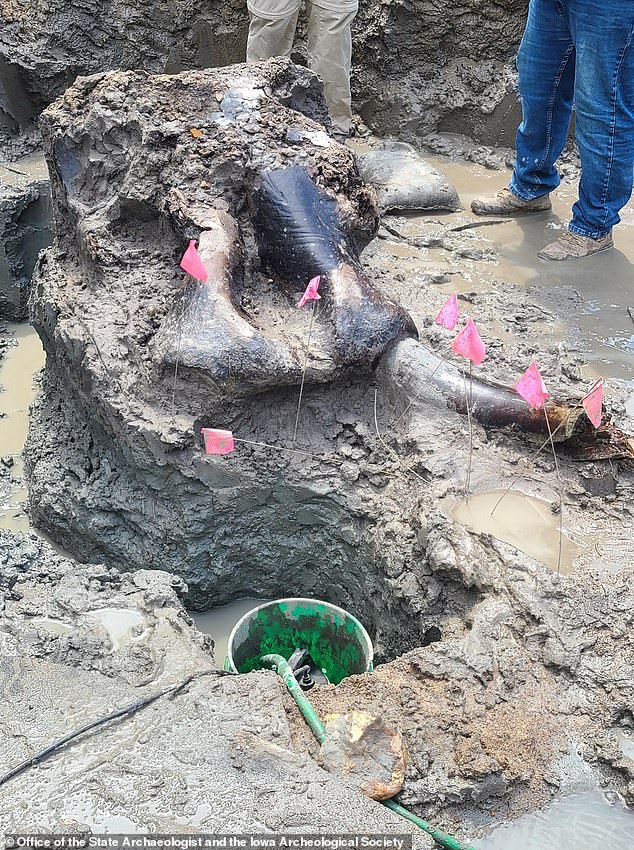Remains of enormous creature that lived with world’s first humans discovered in Iowa
The remains of a gigantic creature that lived with the first humans on Earth have been unearthed in Iowa.
Archaeologists have found several bones and a massive skull of a 13,600-year-old mastodon buried deep in the mud of a creek, the state’s first well-preserved specimen.
Mastodons are distant relatives of modern elephants and extinct mammoths. These lived exclusively in North America between 3.5 million and 10,500 years ago.
The team is now looking for signs that the deceased animal interacted with humans, particularly unique cut marks on the bones that indicate the animal was killed for food.
Archeologists in Iowa have unearthed the remains of a mastodon that lived in the area more than 13,000 years ago
“We’re hoping to find some real evidence of human interaction with this creature — perhaps the projectile points and knives that were used to kill the animal and perform the initial slaughter,” said John Doershuk, director and state archaeologist at the University of Iowa.
“There is also potential evidence on the bones themselves: there could be recognizable cut marks.”
The discovery was made by a Wayne County resident who spotted a femur sticking out of the mud in 2022.
The discovery led archaeologists to comb the region and uncover the mastodon’s enormous skull and other bones.
Using carbon dating, the skull was determined to be 13,600 years old.
The team also found human-made artifacts, such as stone tools, that date to a few thousand years after the mastodon skull.
But the tools revealed human presence in the creek’s watershed, something that had never been recorded before.

The remains are the first well-preserved ones ever found in Iowa. The team also used carbon dating to determine that it is about 13,600 years old

Archaeologists plan to look for specific markings on the bones that indicate the animal had contact with humans
Mastodons were about the same size as modern elephants, with females over two metres tall and males over three metres.
The tusks were less curved than those of mammoths, but larger and longer than the tusks of elephants.
The team also discovered several human-made artifacts, such as stone tools that date back several thousand years after the mastodon skull.
The most striking feature that distinguishes mastodons from mammoths, however, is their jaw teeth.
Unlike modern elephants and extinct mammoths, mastodons had molars with distinctive, conical points.
Mammoths had flat, ridged molars that resembled washboards, and they looked completely different from the teeth of mastodons.

The mastodon still had one tusk attached to its skull, but the team found the other not too far from the remains

Mastodons are distant relatives of modern elephants and extinct mammoths, which lived only in North America between 3.5 million and 10,500 years ago.
The discovery in Iowa came just days after the remains of a mammoth were found in Mississippi.
Mammoths were much larger than mastodons, reaching up to four metres in height and weighing nearly ten tonnes.
Fossil hunter Eddie Templeton was exploring when he made a remarkable discovery on a steep slope on August 9. It turned out to be part of an Ice Age elephant tusk.
The fossil was intact, making it an “extremely rare find for Mississippi,” but it set off a race to protect the artifact, which the state’s sun can dry out and destroy.
